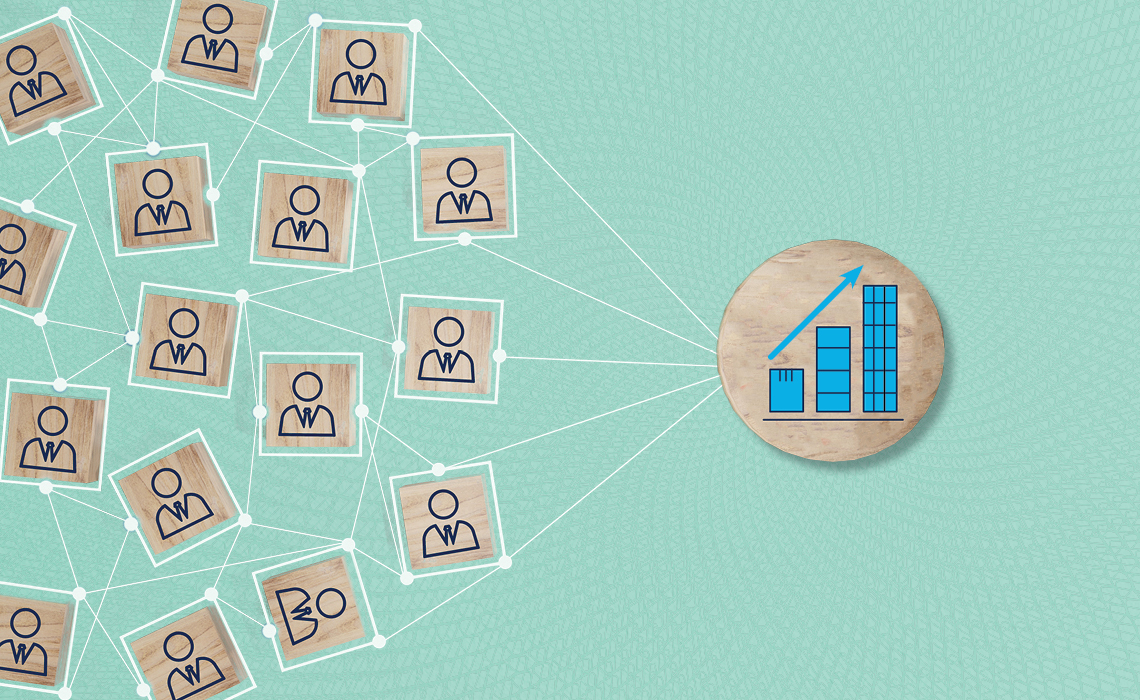Share this
by Matt Waters, CPA on July 11, 2023
The ASC 842 standard for GAAP lease accounting requires that all leases over 12 months are recorded as assets and liabilities on balance sheets.
By now, accounting teams for both public and private companies know they must perform lease accounting under the guidance of ASC 842. But ask many accountants “why,” and they don’t have a good answer.
The best way to ensure your company is accurately operating under ASC 842 is to fully understand the new standard and how it came to be.
Origins of ASC 842
With the financial crisis of the early 2000s, the U.S. Securities and Exchange Commission (SEC) wanted to increase the transparency of an organization’s financial position for better clarity in lease accounting. So, financial reporting portrays accurate valuations for investors. One more recent development in the area of regulated financial transparency is ASC 842.
The FASB worked for years to develop a model that would present virtually every lease on the balance sheet with right-of-use assets and liabilities. A helpful lease accounting tip for private companies: Gain a thorough understanding of the new ASC 842 guidelines and how it undoubtedly impacts your organization.
Defining Lease Accounting
Lease accounting is defined as a set of standards that require an organization to account for its leased assets and the practices and procedures involved in compliance with the standards.
Leased assets may be real estate, manufacturing equipment or airplanes used by another company or organization under a negotiated contract with the company or organization that owns the assets, to name a few.
Leases are similarly classified as operating leases or finance leases, depending on the terms of the agreements.
Defining ASC 842
Accounting Standard Codification Topic 842, ASC 842 or ASU 2016-02, is the new leasing standard to replace the U.S. Generally Accepted Accounting Principles (GAAP) ASC 840 – a nearly 40-year-old standard.
Created by the Financial Accounting Standards Board (FASB), the purpose of the new lease accounting standard is to require organizations that lease assets to disclose the assets and liabilities of their leases on the balance sheet.
The former lease accounting standard (ASC 840) instead reported operating leases in the footnotes of financial statements.
Understanding ASC 842
ASC 842 replaced ASC 840 after Dec. 15, 2018, for fiscal years and interim periods within those fiscal years for public companies and is going into effect for private companies in early 2023 for fiscal years and interim periods within those fiscal years.
The new leasing standard ASC 842 explicitly addresses an issue found in previous reporting methods regarding these leased assets. It closes what many consider a significant accounting loophole in off-balance sheet operating leases.
Much like its predecessor, ASC 840, ASC 842 still classifies lease management into two groups. The first group includes operating leases and finance (capital) leases. The second group includes leases lasting more than 12 months that must be reported on the balance sheet.
However, the ASC 842 standard also requires more robust qualitative and quantitative disclosures.
When the FASB and the IASB started the lease accounting project years ago, the goal was to create a unified set of rules requiring a balance sheet presentation of lease liabilities. Operating leases were widely considered a source of off-balance sheet financing, so the boards pursued requirements for adding assets and liabilities associated with leasing to the balance sheet. The goal of requiring almost all leases to be presented on the balance sheet was accomplished. However, the boards still needed to converge the specific rules. The FASB retained a two-model approach with operating and financing leases, while the IASB selected one model for all leases.
Share this
- Lease Accounting Software (90)
- ASC 842 (83)
- Accounting Teams (52)
- Lease Administration Software (27)
- Retail Tenants (16)
- Commercial Real Estate (14)
- Lease Management (12)
- Real Estate Teams (9)
- ESG (8)
- Market Data and Analytics (8)
- Success Stories (8)
- News and Media Coverage (5)
- Transaction Management Software (2)
- frs 102 (2)
- Customer Success (1)
- Office Tenants (1)
- September 2025 (1)
- July 2025 (2)
- June 2025 (4)
- May 2025 (2)
- April 2025 (2)
- March 2025 (6)
- February 2025 (3)
- January 2025 (4)
- December 2024 (1)
- October 2024 (4)
- September 2024 (2)
- August 2024 (4)
- July 2024 (3)
- June 2024 (3)
- May 2024 (4)
- April 2024 (1)
- February 2024 (1)
- December 2023 (4)
- November 2023 (6)
- October 2023 (4)
- September 2023 (2)
- August 2023 (2)
- July 2023 (3)
- May 2023 (2)
- March 2023 (1)
- February 2023 (3)
- January 2023 (1)
- December 2022 (3)
- November 2022 (4)
- October 2022 (4)
- September 2022 (1)
- August 2022 (4)
- June 2022 (1)
- May 2022 (4)
- April 2022 (8)
- March 2022 (3)
- February 2022 (1)
- January 2022 (2)
- November 2021 (2)
- October 2021 (2)
- September 2021 (3)
- August 2021 (15)
- July 2021 (3)
- June 2021 (1)
- May 2021 (1)
- April 2021 (3)
- March 2021 (1)
- January 2021 (1)
- December 2020 (3)
- November 2020 (1)
- October 2020 (2)
- September 2020 (2)
- August 2020 (3)
- July 2020 (2)
- June 2020 (3)
- May 2020 (1)
- April 2020 (1)
- March 2020 (1)
- February 2020 (1)
- December 2019 (1)
- October 2019 (1)
- September 2019 (2)
- August 2019 (3)
- July 2019 (2)
- April 2019 (69)
- October 2018 (1)
- August 2018 (1)
- July 2018 (1)
- June 2018 (1)
- May 2018 (1)
- April 2018 (2)
- March 2018 (3)
- February 2018 (2)
- December 2017 (1)
- August 2017 (3)
- June 2017 (2)
- May 2017 (2)
- April 2017 (1)
- March 2017 (2)
- January 2017 (2)
- November 2016 (2)
- July 2016 (1)
- June 2016 (1)
- July 2015 (1)
- March 2015 (1)
- June 2014 (1)
- April 2014 (11)
- October 2011 (1)
You May Also Like
These Related Stories

Why are Lease Accountants Still Manually Entering Journal Entries?

Why a Lease Accounting Manager Chose an Automated ASC 842 Solution



